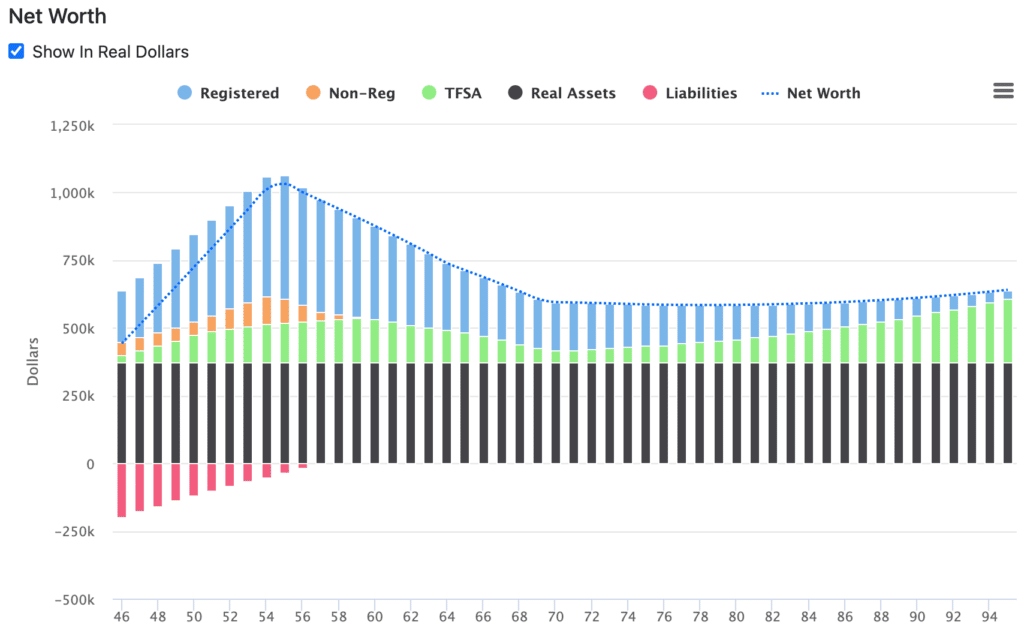
By Steve Lowrie, CFA
Special to the Financial Independence Hub
There are plenty of perks to being your own boss, including the ability to build up tangible assets to invest in your personal portfolio, your corporate accounts, or both. But if you are a small- to mid-sized Canada-controlled private corporation (CCPC) owner, how do you know if you’re managing your personal and corporation investments as tax-efficiently as possible? Let’s take a look at that today.
Your Accountant and your Financial Advisor: A powerful pairing
In my experience, successful business owners usually have their corporate tax planning practices well in hand. Any number of reputable accounting firms can help you tax-efficiently structure your CCPC, manage its revenue and expenses, and accurately report its activities to the proper authorities. Your accountant also should be able to help you plug a lot of the taxable leaks that can otherwise siphon away excessive individual or corporate wealth.
However, I have noticed a business owner’s best, most tax-efficient corporation investment strategies often slip through unattended.
That’s no knock against accounting firms. It’s not typically in their purview to optimize tax-efficient investing across your (and potentially your spouse’s) taxable personal and corporation investment accounts, tax-favoured RRSPs and TFSAs, etc. That’s where an independent financial advisor, like Lowrie Financial, comes in. Your CA or tax attorney has the specialized expertise needed to tend to your corporate assets. We focus on the intersection between your corporation tax planning and your greater wealth planning … including how to manage all your investments as tax-efficiently as possible.
Tax-Efficient Investing: Tax Planning vs. Predicting
Before we dive into the details, I’d like to emphasize that none of us has a magic wand to make your tax bill disappear entirely. Nor do I possess a Ouija board to divine future tax code changes. Instead, I believe it’s best to avoid overly clever or predictive tax-cutting ploys that seem too good to be true — because they probably are — and focus on what we can manage here and now.
So, what are the solid tax-efficient strategies within our control? Most are the same whether you’re investing as a business entity or an individual. I’ve already covered many of them in “Tax Strategies to Boost Your Financial Savings.” Still, common-sense advice has a way of getting buried under all the financial nonsense, so let’s revisit the following four tax-planning strategies for a business owner’s personal and corporate investments alike:
1.) Don’t let Short-Lived adventures distract you from your Long-Term Financial Goals
Who isn’t attracted to the idea of scoring big on an action-packed investment? When things are going up, it’s fun, like finding extra money you’d forgotten about in your sock drawer. Managing your investments for gradual growth is more like watching paint drying on the wall.
Unfortunately, as I described in “Investment Fads and Other Destructive Behaviours,” corporate and individual investors who chase after short-term returns aren’t likely to serve their long-term financial goals. Instead, they end up with what I call a “dog’s breakfast portfolio” of whatever investments have been randomly hot or not over the past several years.
In the long run, this approach not only leaves you anxious and uncertain about how your investments are holding up, but it’s also usually not as tax-efficient. Instead of giving you the confidence to minimize your trading and adhere to some of the other best practices I’ll cover next, you end up jumping in and out of markets and positions, disregarding the tax ramifications, and assuming your accountant will dig you out of whatever mess you’ve created.
How do you avoid this trap? Financial planning for business owners (or anyone else) means having an investment plan to guide the way, shaped by an evidence-based strategy; and sticking with your plan over time, adjusting it only as your business or personal goals evolve.
2.) Keep your Friends close and your Taxable Capital Gains closer
Understandably, you may think of your taxable investments’ capital gains as a burden. But as I covered in “Tax Strategies to Boost Your Financial Savings”, they can actually be one of your best tax-planning friends.
Some recent good news was that there were no changes in the recent 2022 Federal Budget on the capital gain inclusion rates. So capital gains are still taxed at half of your personal or corporate tax rate. For example, if your personal or general corporate rate is 50%, then you will pay 25% on capital gains. Yes, you read that correctly, 50% less tax! I have yet to find anyone who wouldn’t opt to pay 50% less tax on anything when they’re able.
This concept applies to realized capital gains, and even more so to unrealized gains you can defer for now. Like the snowball effect of compounding interest (earning interest on interest earned), you or your business can build up a compounding tax arbitrage by putting off paying taxes on unrealized gains, which can then stay invested to accumulate even more tax-friendly gains.
You don’t want to be penny wise and pound foolish by chasing after tax savings that don’t serve your greater wealth interests. So, it remains wise to first ground all your investment decisions in your financial goals, with a portfolio built and managed accordingly. Then, the more effectively you can leave your corporate assets untouched to create gains, the more tax-efficient your results are likely to be when you do sell taxable positions according to your disciplined investment plan.
3.) Marginal Tax Rates matter
Supplementing our first two points, it’s also worth keeping an eye on the marginal tax rates you land in, based on your individual and corporate income.
For your personal income, this is especially important if it’s hovering right around the perimeters of those marginal rate points. In Ontario, if you make over $221,709 in 2022, you’ll be in the top bracket. It’s worth being aware of when you may be getting close to that threshold, so you can sharpen your income tax planning pencil, typically in concert with your financial advisor and accountant team. Continue Reading…














